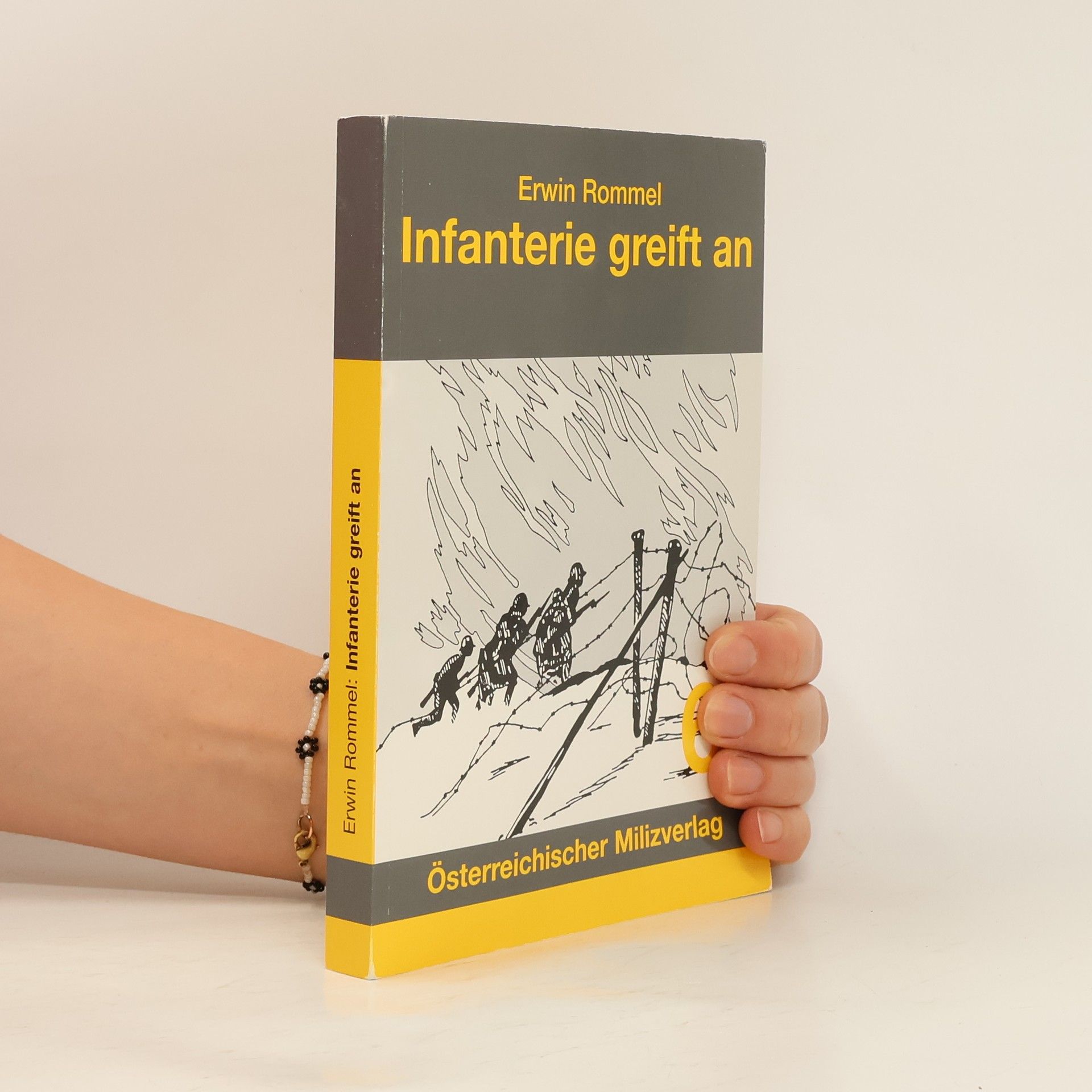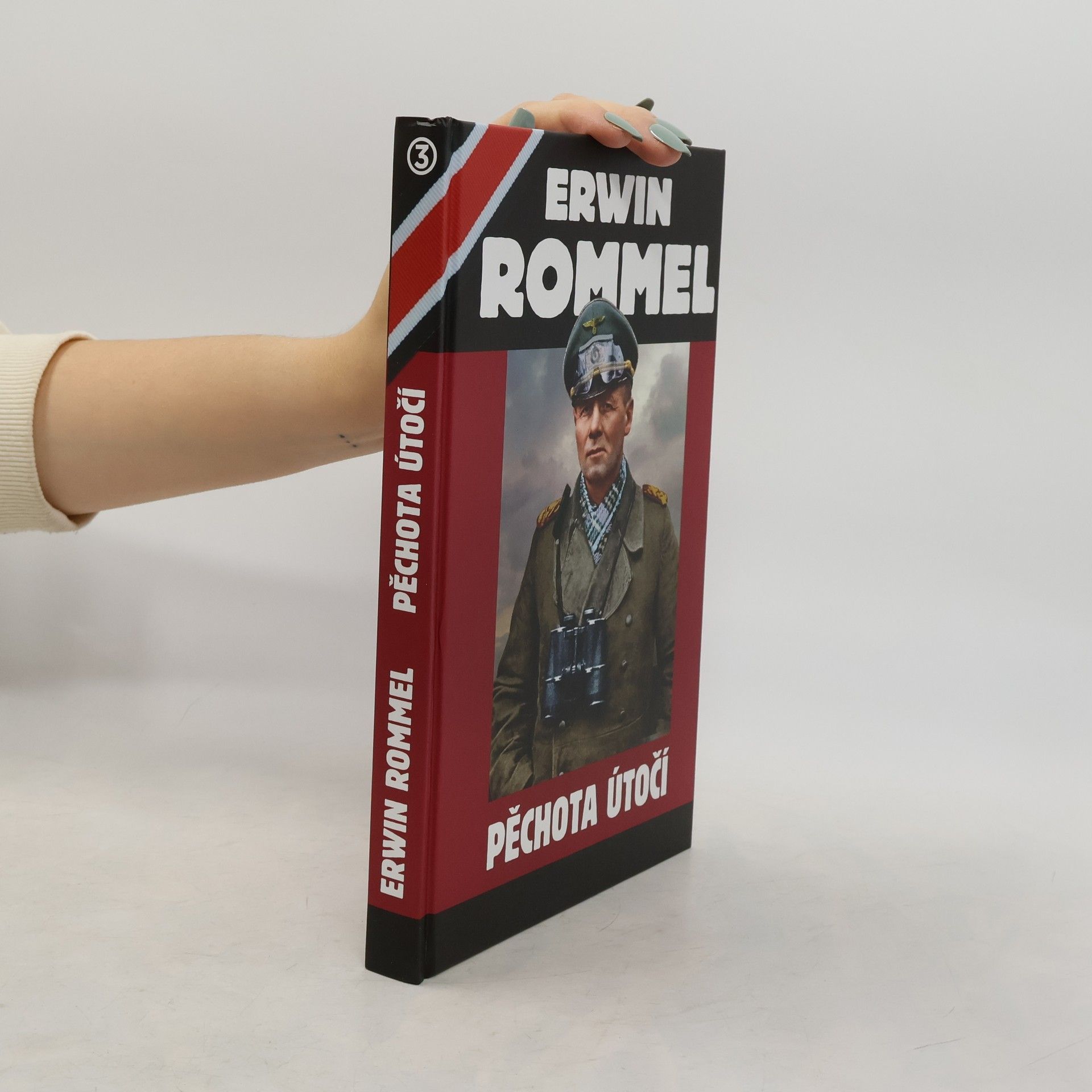Erwin Rommel Bücher
Dieser Autor ist vor allem für seine militärische Laufbahn als Generalfeldmarschall in der deutschen Armee während des Zweiten Weltkriegs bekannt. Seine taktischen Ansätze, die er aus den Erfahrungen des Ersten Weltkriegs verfeinerte und in seinem klassischen Werk darlegte, sind Gegenstand des Studiums geworden. Seine Führung in der nordafrikanischen Kampagne brachte ihm den Spitznamen „Wüstenfuchs“ ein, der seine Fähigkeiten als Panzerkommandeur unterstreicht. Die Figur des Autors und seine Beziehung zum damaligen politischen Regime bleiben bis heute Gegenstand historischer Debatten und Interpretationen, was ihn zu einer komplexen und vielschichtigen Persönlichkeit macht.







Infanterie greift an
12. Isonzoschlacht
Der im Zweiten Weltkrieg als „Wüstenfuchs“ bekannt gewordene Erwin Rommel wurde am 15. November 1891 in Heidenheim an der Brenz geboren. Nachdem er sich für die Militärlaufbahn entschieden hatte, trat er 1910 als Fahnenjunker in das Infanterie-Regiment „König Wilhelm I.“ (6. Württembergisches) ein. 1912 zum Leutnant befördert, kämpfte er mit Beginn des Ersten Weltkriegs an der Westfront. Ab Oktober 1915 war Rommel, inzwischen zum Oberleutnant befördert, Kompanieführer beim Württembergischen Gebirgsbataillon. Ende 1917 wurde das Bataillon an die Isonzo-Front verlegt und nahm am Gebirgskrieg teil. Im Januar 1918 wurde Rommel als Ordonnanzoffizier in den Stab des Württtembergischen Generalkommandos z. b. V. 64 versetzt und erlebte dort das Kriegsende. Für seinen Einsatz im Ersten Weltkrieg wurde Erwin Rommel mit dem Eisernen Kreuz zweiter und erster Klasse ausgezeichnet, sowie mit dem Orden Pour le Mérite. 1937 erscheint Erwin Rommels Buch „Infanterie greift an“, in dem er ausführlich über seine Einsätze und Erfahrungen aus dem Ersten Weltkrieg berichtet.
Infanterie greift an
Erlebnis und Erfahrung
Rommel and his art of war
- 192 Seiten
- 7 Lesestunden
Illustrated with 120 photographs Carries the reader from the Alps in WWI to North Africa in WWII With many photographs taken by Rommel himself In this compelling book, Rommel himself, one of the most successful commanders on World War II and certainly the most well-known, writes about his views on the philosophy of warfare, battles, leaders, and the progress of both World Wars. A complete picture of how a military genius grappled with the actuality of war is presented through Rommel's accounts of his experiences as a soldier in World War I, and through newly translated extracts from letters, orders and the narratives of daily action in World War II that he dictated every evening. Dr Pimlott's commentary sets Rommel's writing in context, describing the background to the great general's ideas and the way in which his plans were affected by circumstances beyond his control. The result is an outstanding insight into Rommel's military career, written from an objective viewpoint.
Rommel in his own words
- 192 Seiten
- 7 Lesestunden
“One loses all sense of time here. The battles for the last positions before Alexandria are hard. I was several days in the front line and lived in the car or a hole in the ground.” – Erwin Rommel Combining private letters to his wife, orders, his daily accounts of battle written during World War II and his published memoirs, 'Rommel – in his own words' offers a compelling insight into the mind of one of the twentieth century’s great military leaders. Alongside accounts of fighting in World War I and World War II, Rommel shares his views on the philosophy of warfare, battles, leaders and the progress of both world wars. Dr John Pimlott’s commentary puts Rommel’s writing into historical context, describing the background to Rommel’s ideas and how his plans were affected by circumstances beyond his control. The book includes 120 black-and-white photographs – many of them taken by Rommel himself – and battle maps illustrate the theatres in which Rommel fought. From the Alps in World War I to the invasion of France in 1940, and from the Desert War in 1943 to Normandy in 1944, 'Rommel – in his own words' brings the concerns and crises of Rommel’s wars to life.
Pěchota útočí
- 272 Seiten
- 10 Lesestunden
Ačkoli si většina čtenářů spojuje Rommela s jeho africkou kampaní za druhé světové války, v níž si vydobyl auru neporazitelnosti, první kroky ke své pověsti génia učinil již ve válce první. V této knize z roku 1935 popisuje své největší bitvy, ukazuje způsob, kterým je vyhrál, svou strategii a použití obrněných sil. Graficky znázorňuje rychlý postup svých jednotek, který jej proslavil jako agresivního velitele skvěle využívajícího jak terén, tak slabosti nepřítele. Tyto lekce válečného umění znal nejen každý německý velitel, ale staly se studijním materiálem i pro Pattona a další spojenecké velitele, kteří Rommela porazili. Erwin Johannes Eugen Rommel (15. listopadu 1891 - 14. října 1944) se narodil v Heidenheimu an der Brenz, otec byl ředitelem gymnázia a matka dcerou významného politika. Po studiu na reálném gymnáziu se stal kadetem a v roce 1911 nastoupil na důstojnickou školu v Gdaňsku. Za 1. světové války bojoval na západní frontě, pak v Rumunsku a Itálii, kde prokázal své nekonvenční myšlení a odvahu (vyznamenán Železným křížem 1914 za odvahu). Proslavil se v bitvě u Monte Matajur (říjen 1917), za níž byl vyznamenán nejvyšším pruským a německým vojenským vyznamenáním (Pour le Mérite). Od ledna 1918 sloužil na generálním štábu a byl povýšen do hodnosti kapitána. V meziválečném období se úspěšně věnoval zejména výcviku vojsk (velitel akademie), v roce 1939 byl povýšen do hodnosti generálmajora a stal se velitelem Hitlerova hlavního stanu. Za 2. světové války se účastnil tažení do France, bojů v Africe a Itálii a nakonec obrany francouzského pobřeží při invazi. Po neúspěšném spiknutí proti Hitlerovi spáchal 14. října 1944 sebevraždu. Maršál Rommel popisuje svá vítězství dosažená za první světové války, jež založila jeho pověst vojenského génia. Přibližuje taktiku, metody a zásady, které v bojích použil.
